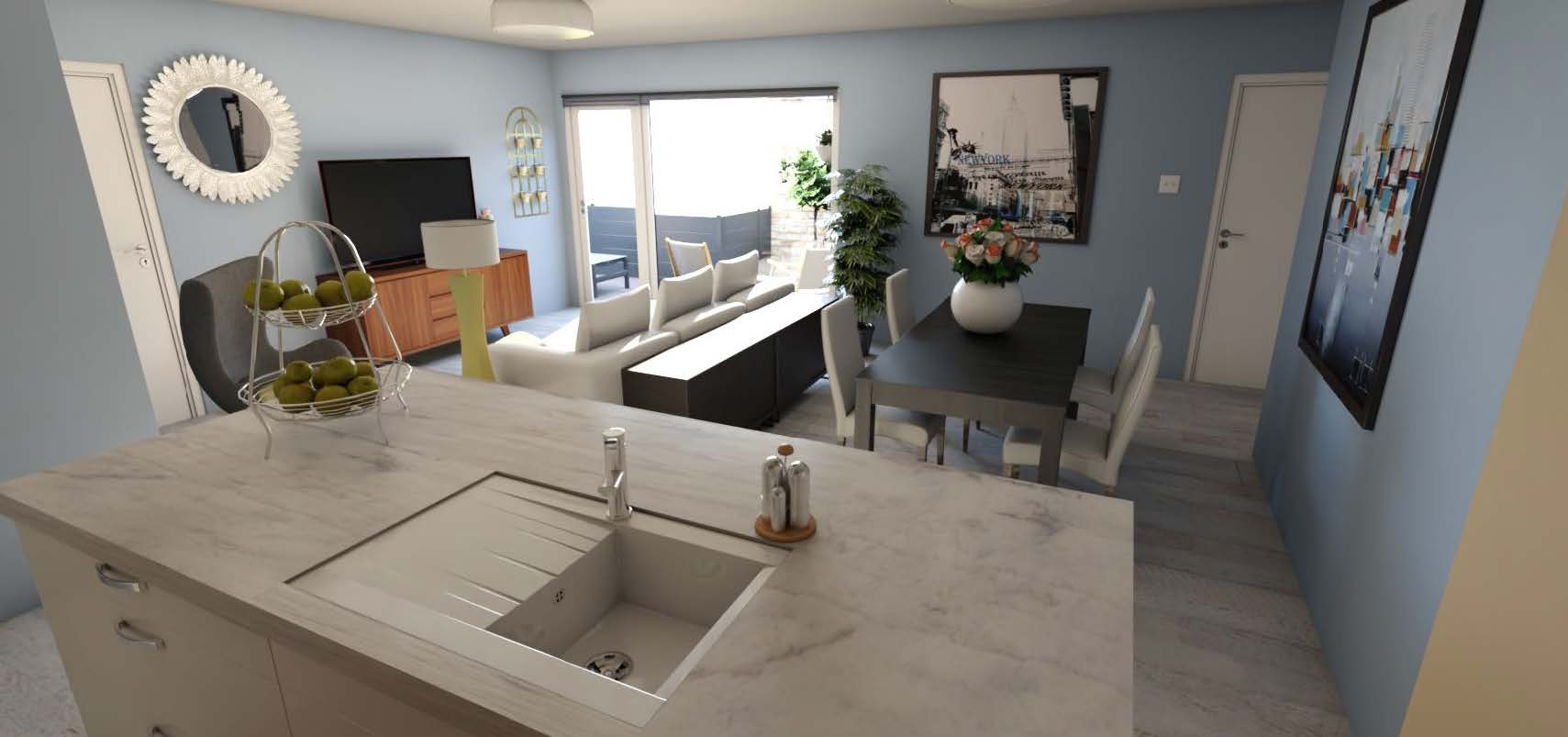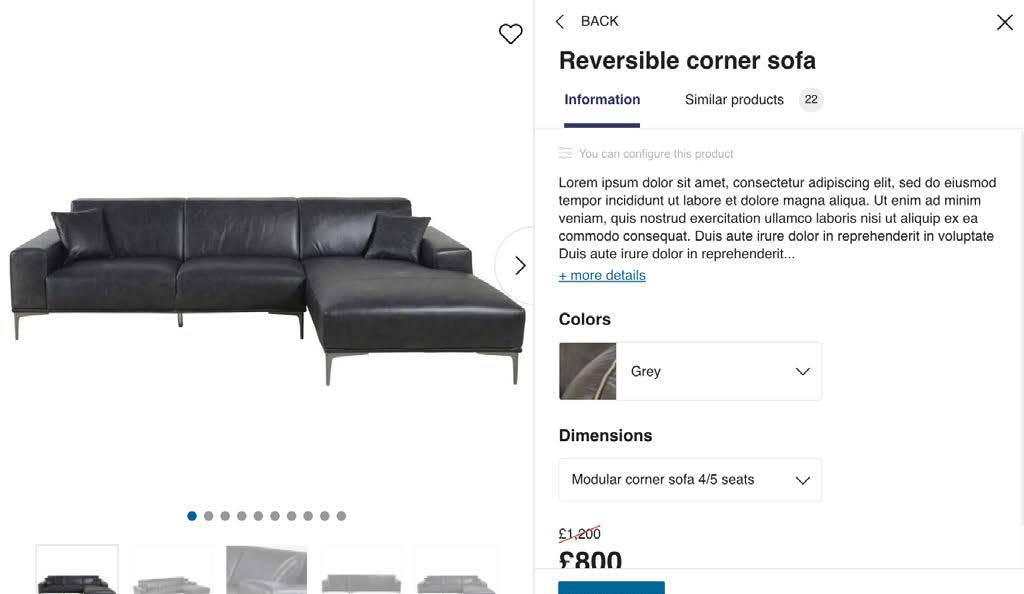Home Retailers April 16, 2020
How home retailers can empower customers and future proof their personalization strategies
The home improvements market is tipped to reach
US$680 billion by 2025, presenting home retailers
with a golden opportunity to increase market share.
and accelerate sales growth. But with margins already squeezed by tough competition to meet diverging consumer demands, herein lies a familiar challenge: how to personalize the customer experience successfully, and at scale.
To maximize revenue growth, home retailers need targeted strategies that optimize processes and increase profit margins. They need a solution that doesn’t just inform personalization strategies, but that delivers them by empowering each customer to drive
their own experiences.

PERSONALIZATION: ESSENTIAL, BUT DIFFICULT TO DELIVER
The consumer market is becoming ever more diverse; it’s both driving and driven by huge efforts to improve customer experience across the retail industry, resulting in omnichannel, greater customization, same-day delivery and more. Each customer, and each path to purchase, is unique, but while the demand for personalized experiences continues to grow, so too does the challenge of delivering them.
A huge percentage (66%) of consumers have said that a lack of personalization inhibits them from making a purchase, but to take personalization strategies to the next level, home retailers must overcome a multitude of factors:
-
- Multichannel Buyer Preferences
73% of consumers use multiple channels to make purchases.
- Multichannel Buyer Preferences
-
- Vast Competition in the Market
89% of consumers have switched to a competitor following a poor customer experience.
- Vast Competition in the Market
-
- Lack of Customer Insight
For example, only 1 in 26 unhappy customers will complain, the rest just leave, and retailers never understand why.
- Lack of Customer Insight
-
- Siloed Legacy Systems and Technology
Only 30% of retailers have in place the IT systems and capabilities to enable seamless visibility and fulfillment.
- Siloed Legacy Systems and Technology
The modern-day home remodeler expects tailored interactions, hyper-relevant product offerings and an advanced planning experience within a framework that is efficient, flexible and extremely visual. All this comes at a cost to retailers, who are accumulating a growing number of disparate solutions for catering to evolving customer needs, in real-time, across multiple channels. Fortunately, a more streamlined approach can be delivered with the latest technology. New, highly personalized offerings such as the HomeByMe for Home Retailers 3D planning solution, can boost the sales cycle and enable greater customer autonomy, which is key to creating successful sales and marketing strategies that are future proof.
RETAILERS MUST UNDERSTAND WHAT CUSTOMERS REALLY WANT
Where customer demand is changing and becoming ever more varied, understanding the value of each individual customer, and tailoring their experience accordingly, is now more important than ever. Each persona presents entirely different shopping behaviors, pain points and preferences that home retailers need to understand and cater to if they are to achieve their full revenue potential.
- Loyal Customers
- Impulse Buyers
- Price Conscious Consumers
- Need-Based Consumers
1. LOYAL CUSTOMERS
- Make up 8% of a typical customer base
- Account for 40% of total revenue
- Hold a 306% higher customer lifetime value
Loyal customers are the most valuable segment for retailers, spending double the money, and sharing their experiences with twice as many people when compared to other customer segments. In a crowded market, the challenge is creating and retaining them.
Providing an exceptional customer experience every time is the simplest way to build brand loyalty and advocacy. Every customer’s expectation is different with home retail: brands must embrace this by providing consumers with the ability to express their individuality. Loyal customers also need to validate and affirm their choices: something that retailers can fulfill through branded online community areas.
Advanced platforms, such as the HomeByMe for Home Retailers 3D planning solution, can bridge the gap between customer expectation and experience
2. IMPULSE BUYERS
- 80% of consumers have impulse bought
- 49% of 18-24 year olds impulse buy the most
- 79% of impulse purchases are in-store – only 13 percent are online
Considering 8 in 10 consumers have made an impulse purchase, this buying behavior applies to the majority of customers at some time or another, with a high spend potential that is important to recognize. They chase an emotional connection and reaction when choosing products, which can dramatically shorten the sales cycle.
Customers who impulse buy do not set out with a brand or product in mind, so being visible and distinguishable from competitors is crucial. Retailers need to ensure transactions are as fast and seamless as possible – delivering on the desire for instant gratification, while amplifying their in-store presence. Impulse shoppers are also receptive to inspirational ideas and helpful advice from sales staff, making an upsell easy for retailers who can appeal directly to a customer’s individual tastes and preferences.
3. PRICE CONSCIOUS CONSUMERS
- 56% of online shoppers abandon carts due to unexpected costs
- 75% of consumers expect discounts/offer
- 64% say fair pricing
Cost remains a fundamental factor for a growing number of consumers, who have a huge choice of retailers, products and services that they can compare online. For this reason, price conscious consumers will undertake extensive research before hitting ‘buy’, testing out different product combinations and market comparisons to drive down total costs. But while working under already tight margins, home retailers need to find other ways to incentivize these consumers, giving them the excitement of a good deal while remaining profitable.
In order to appeal to a price-sensitive buyer, costs must be transparent. Home design plans and proposals should contain products that are interchangeable, easily adapting to budget and offering a number of options that prevent the customer from missing out on a sale. Retailers need to provide customers with everything they need to easily conduct their research and comparisons, with in-depth product information and planning guidance, in one easy-to-access location.
4. NEED-BASED SHOPPERS
- 87% of shoppers begin their product searches on digital channels
- 53% say they always do research before they buy
- 40% wish retailers would do a better job of sharing inventory info
This type of shopper will only browse to purchase products or services that fulfill a specific need, heading in-store or online with a clear plan of what they want. The opportunities to target need-based shoppers can be few and far between, but when they do arise, in-store guidance is particularly well received, in order to make the purchase process as seamless as possible.
Many consumers will fall under this category at some point in their design journey and a positive experience that provides convenience and relevance can open the door for repeat business and additional spend. Sales staff can best secure conversions by providing practical guidance and advice, such as on a customer’s design ideas, how the installation process works, and how accuracy can be assured throughout. Adopting the right 3D planning solution helps here, too. Retailers would be wise to choose an omnichannel offering that allows shoppers and sales staff to work collaboratively on designs and fulfil the shopper’s specific need quickly and efficiently – whether that’s via an in-store device, or on the website.

EMPOWERING CUSTOMERS WITH GREATER AUTONOMY
Home retailers looking to offer highly personalized and targeted interactions can realize their vision by empowering customers with collaborative and creative solutions, such as the HomeByMe for Home Retailers 3D planning solution.
The easy to use cloud-based platform provides home retailers with an effective omnichannel solution that combines 3D design, visualization, proposal generation and ecommerce capabilities in one. Customers can see their home designs come alive in a 3D virtual reality environment on computer desktops and tablets. As a result, they can accurately and conveniently build the home of their dreams, whether on the sofa or in-store with a sales professional. Designs can also be accessed in-store so that customers can validate their ideas and seek helpful installation advice from sales professionals who are, in turn, receiving qualified customers further along the sales funnel.
The benefits do not just end at heightened conversions for home retailers – a crucial part of the platform is the data that is stored from online customer profiles. A wealth of business-critical insight is readily accessible by home retailers. The information that can be extracted includes customer demographics and frequencies of use, the most common styles and selections used in design projects, average shopping cart values and sales conversion rates. This provides unparalleled insight into customer preferences, which can be utilized to tailor product offerings in line with customer demand, and target customers via hyper-personalized marketing strategies.
When combined with an exceptional user experience, the solution gives any home retailer a distinct market advantage. The powerful platform has all that is needed to inspire, create and bring to life designs in one user-friendly interface, which keeps shoppers engaged and motivated from start to finish. Value-added features, such as 3D rendered images of user designs that can be shared amongst peers for review and inspiration, serve as great examples of user-generated content that can be utilized to build brand community. Whether online, in-store, via sales, marketing or social strategies, the HomeByMe solution can add value to all areas of the home retail business.

CONCLUSION
Home retailers face a growing number of challenges that stem from an overwhelming consumer demand for highly personalized shopping experiences and interactions. This is where the HomeByMe for Home Retailers 3D planning solution comes in, providing a comprehensive and scalable solution that facilitates autonomous experiences and delivers real-time insight. By integrating a fully customizable omnichannel planning platform, home retailers can empower consumers to accelerate their own personalized design journeys, driving down costs while broadening their customer base.



